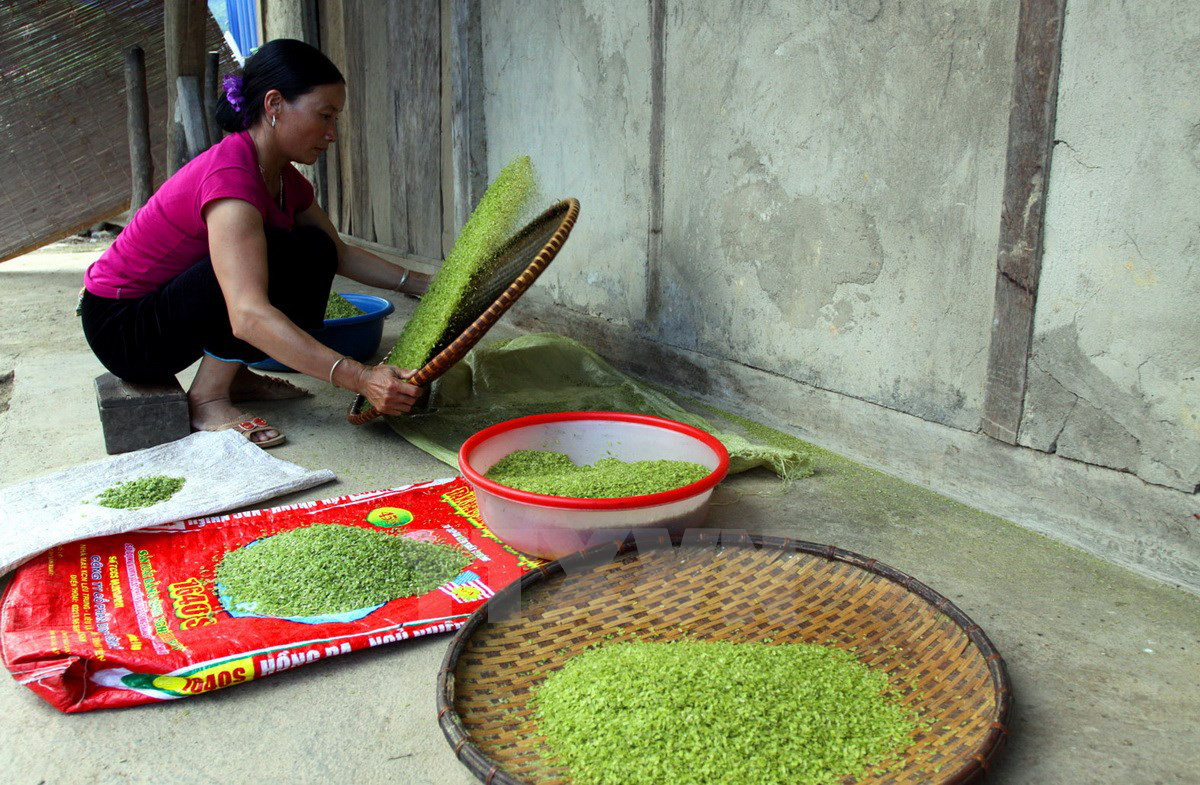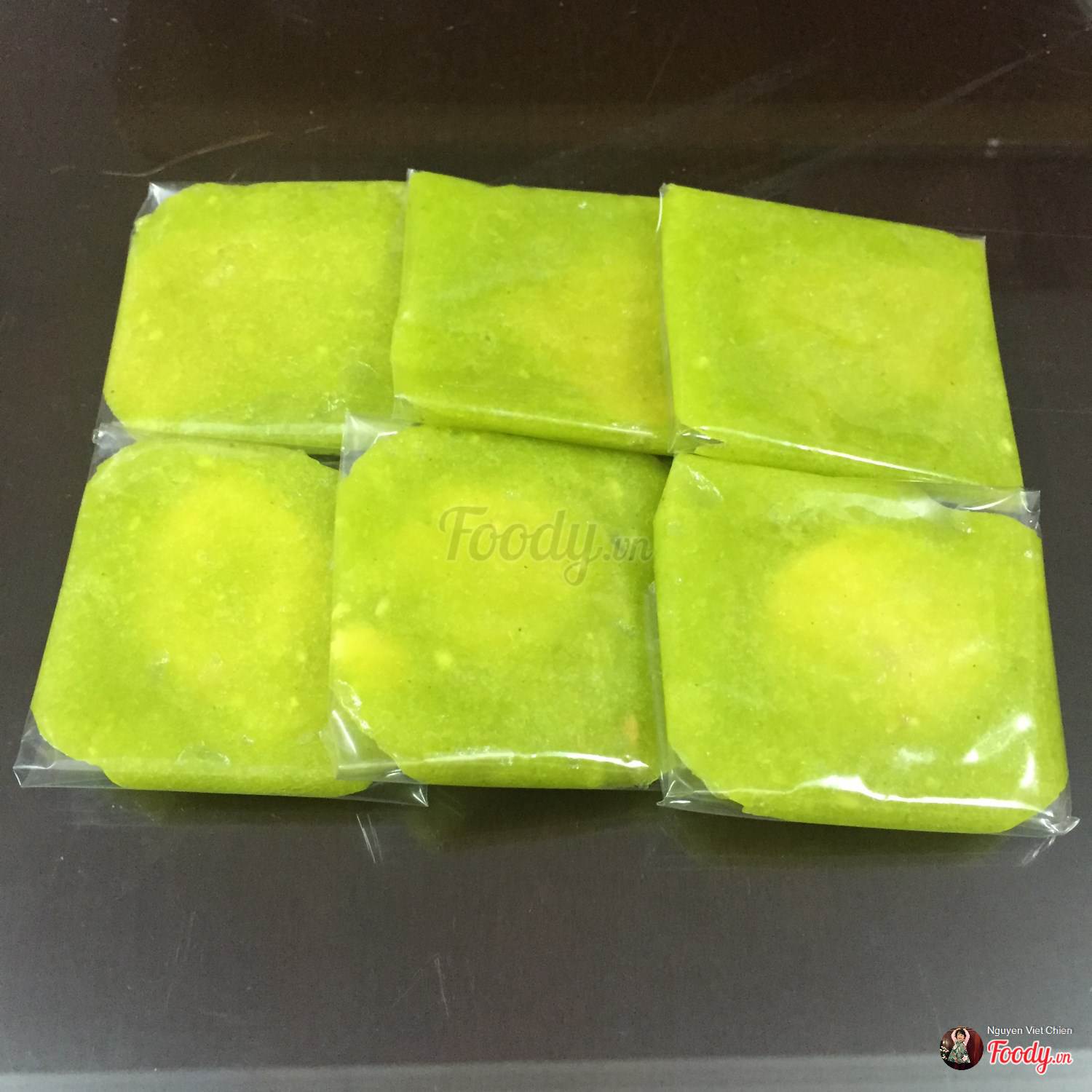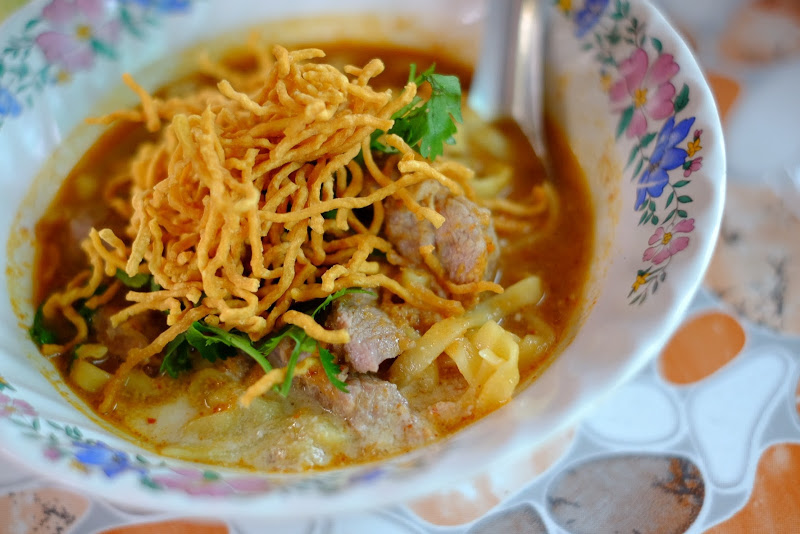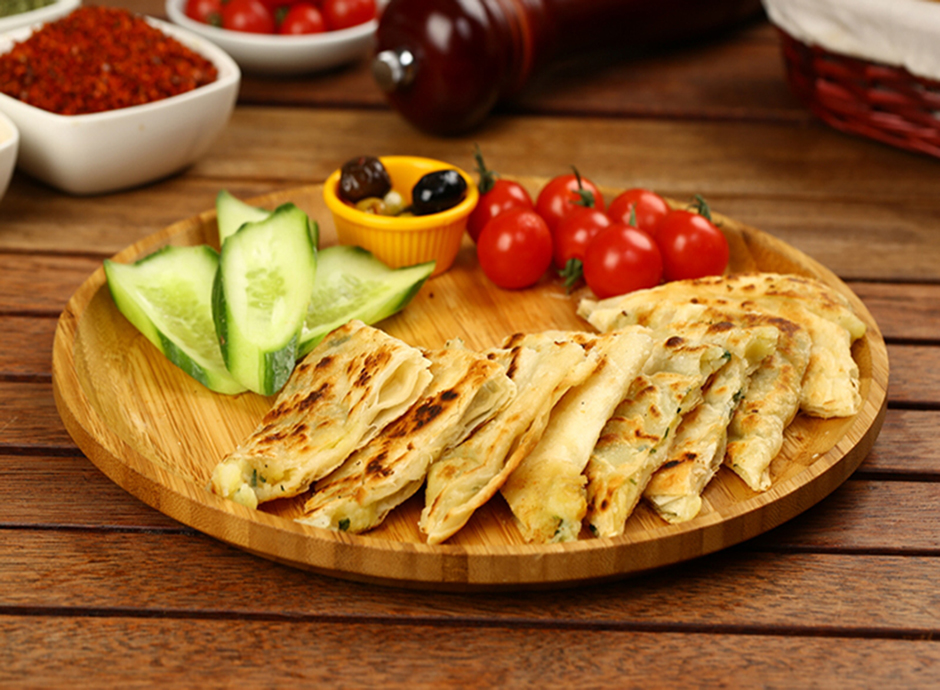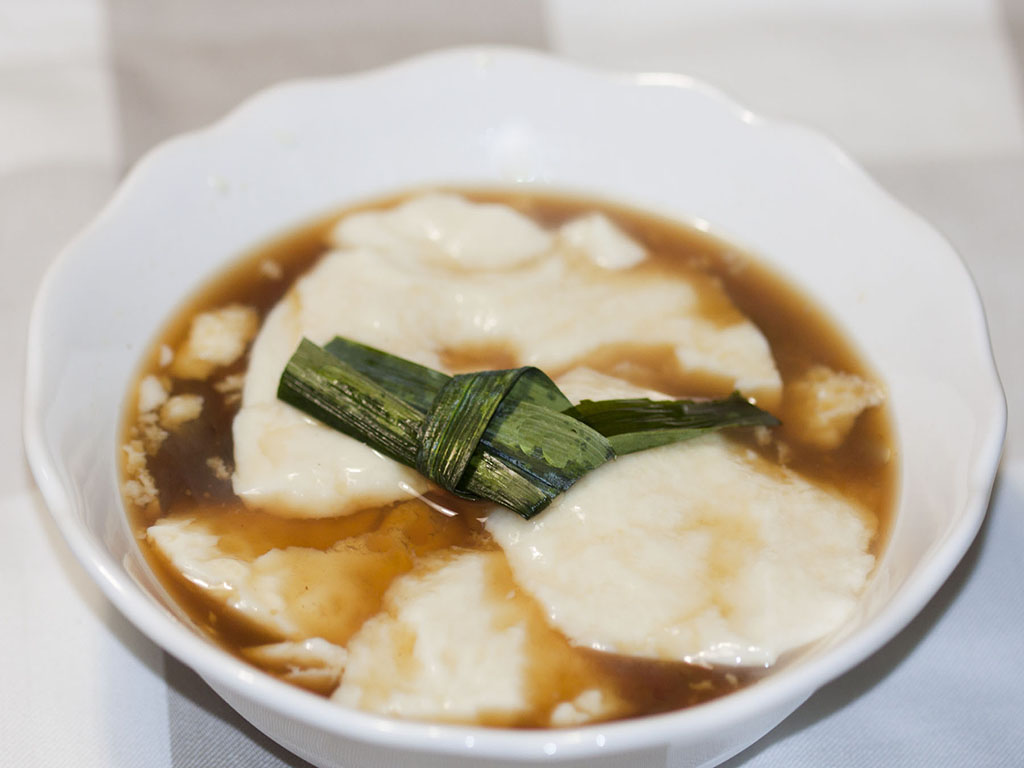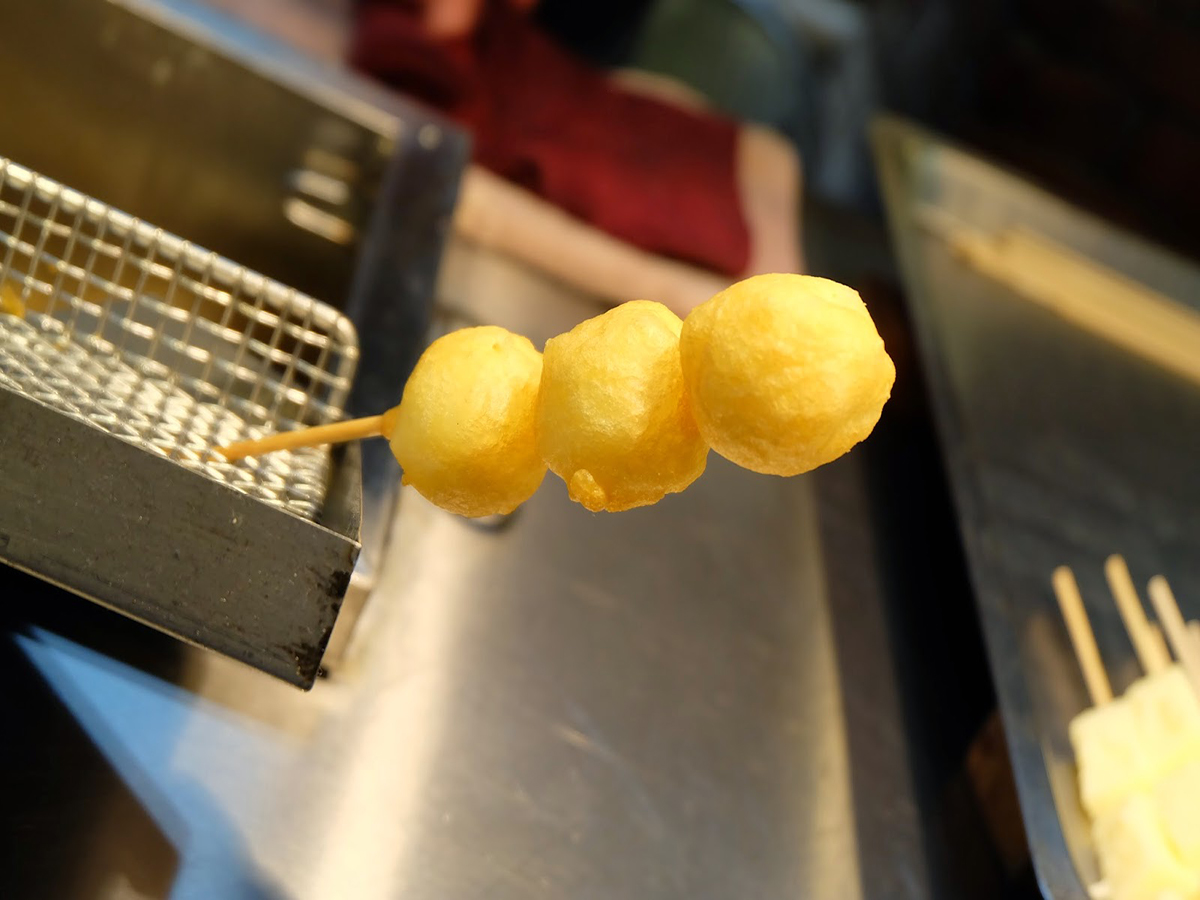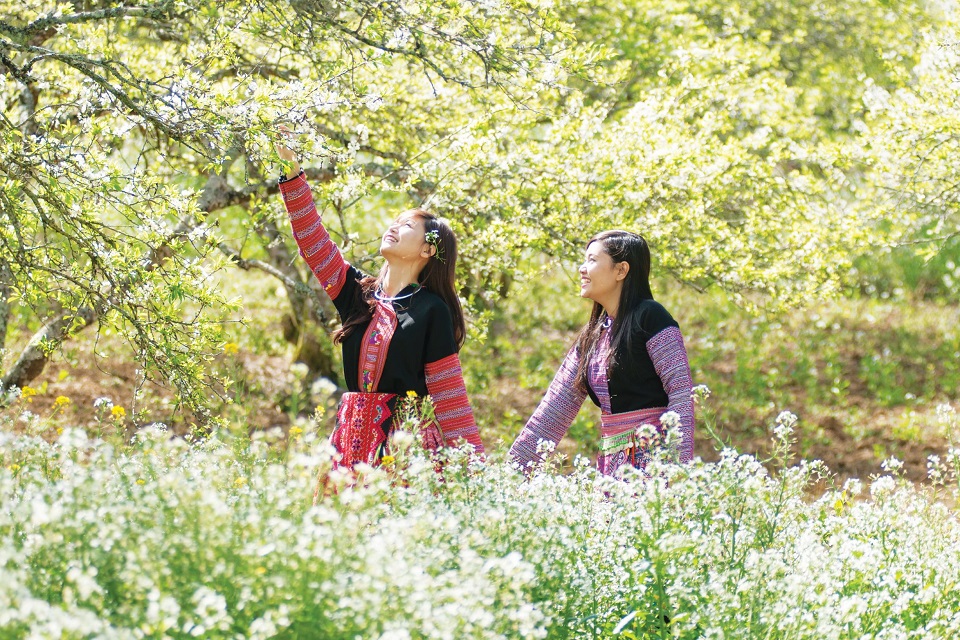Cốm - Autumn’s special gift
"Cốm" (green sticky rice) is a delicacy that is made only in autumn and cherished by all Vietnamese. For Hanoians, nothing evokes autumn like the taste of young rice from Vong village, the grain so sweetly scented that they left a lasting impression.
Every autumn, when the cool north-westerly wind brings a cold dew, the sticky rice ears bend themselves into arches waiting for ripe grains because these rice grains are at their fullest and the rice-milk is already concentrated in the grains, and the local farmers will know it is time to make “Cốm” – a specialty made from young green sticky rice.
"Cốm" is often eaten by hand, directly from the lotus leaves, a pinch at a time. When eating “Cốm”, you must enjoy slowly and chew very deliberately in order to appreciate all the scents, tastes, and plasticity of the young rice which is sweet, nutty and buttery.
From the complicated process...
In Vong village, making “Cốm” used to be a common trade. People from Vong village are said to have the most complicated process for making "Cốm". Firstly, glutinous paddy is planted. To produce their famous "Cốm", residents of Vong village grow a special variety of sticky rice. The sticky rice must be harvested at just the right moment. When the paddy begins to ripen and still contains milk it is reaped but only at early dawn. The rice is plucked off manually so that the grains are not broken. Next, the choice grains are carefully selected, sifted and washed. At night, the grains are dried in a large pan over a soft fire and then pounded in stone mortars. Following this, the young rice is removed from the mortar and winnowed before being poured again into the mortar and the process repeated. This is then repeated exactly seven times so that all the husk is removed from the young sticky grains. There is an art to this part of the process. If the pounding is done irregularly and in haste, or it is not repeated seven times, the green colour of the grains will disappear and be replaced by an unexpected brown colour. Then the whole process will have been to no avail because customers will refuse to buy such produce. This should go some way to explaining exactly how difficult the whole process of "Cốm" making is.
“Not every one can dry and pound "Cốm". It is a closely guarded secret in some families that is never revealed to the mothers or daughters!” says 72-year-old Pham Thi Nguyet, whose family still produces “Cốm”. After the “Cốm” has been pounded, the crystal spring rice is wrapped tightly in emerald lotus leaves to keep it from drying and allowing it to absorb lotus flavour.
...to other specialities
“Cốm” is an ingredient used in many specialities of Vietnam, including “Cốm xào” (browned green sticky rice), “Bánh cốm” (green sticky rice cake) and “Chè cốm” (sweetened green sticky rice paste) and so on.
“Bánh cốm” is the well-known as it is found at every engagement ceremony. The cakes are wrapped with bananas leaves into squares, tied with a red string and stamped on the outside with a Chinese character meaning "double happiness". With these characteristics, “Bánh cốm” is believed to be a symbol of steadfast and eternal love.
Green sticky rice cakes are sold on Hang Than Street. Sticky cakes stuffed with green rice are sold on Hang Dieu Street and Quoc Huong green rice paste is sold on Hang Bong Street. Restaurants also offer dishes involving “Cốm”, such as chicken stewed with herbs and green rice, or green rice served with fried shrimp.
Nowadays, thanks to convenient means of transport, many Hanoians send Vong Village’s "Cốm" to their relatives in other parts of the country, and even abroad, as a special gift. By this way, the delicious taste of "Cốm" always stays in the hearts of Hanoians wherever they live. To those who have ever been involved in farming, eating "Cốm" often reminds them of a fresh and fragrant paddy.
Source Vietnam-beauty

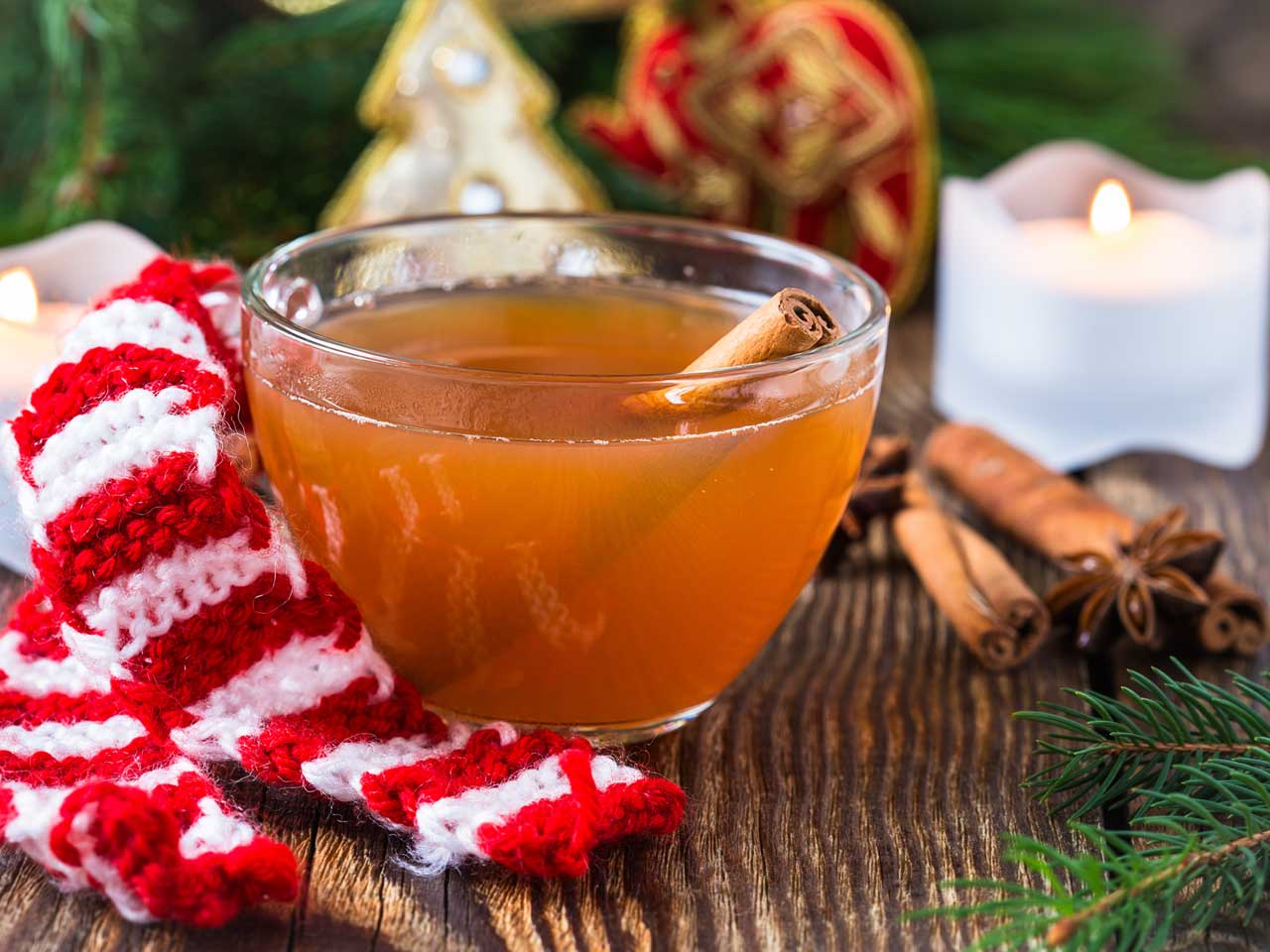
The best Christmas drinks from around the world
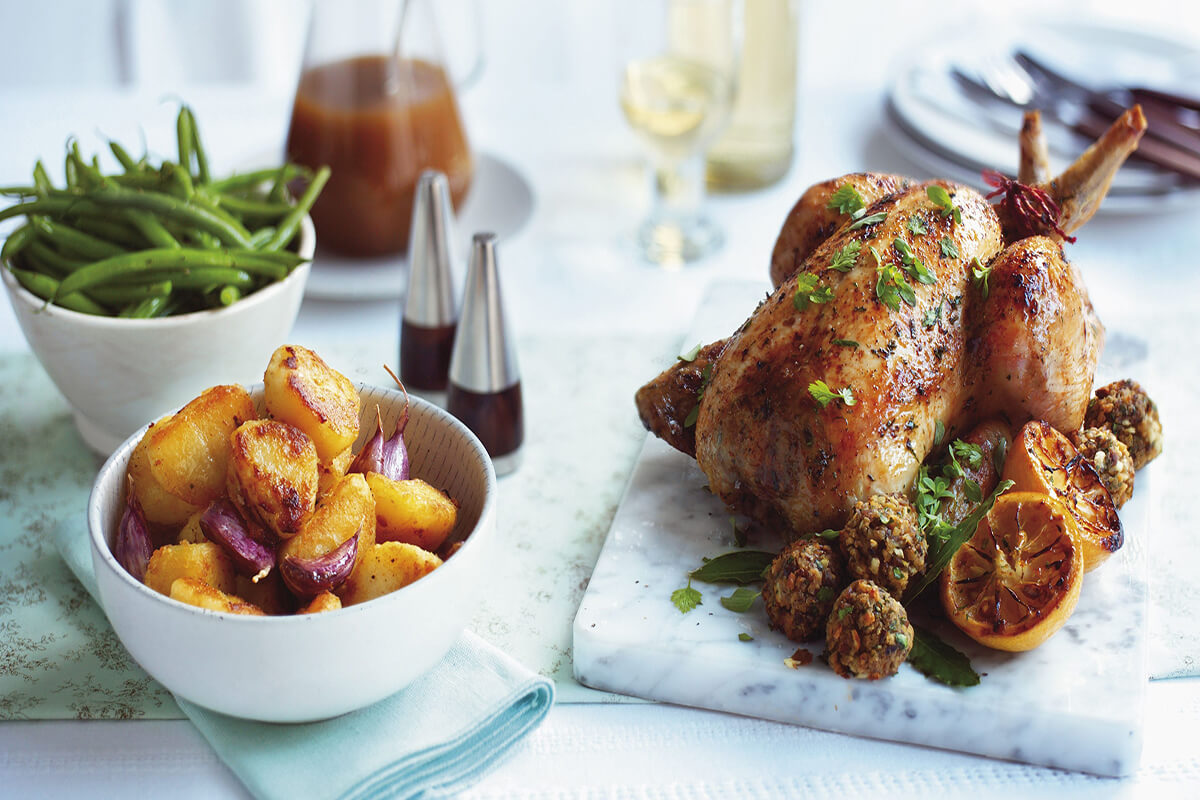
Traditional Christmas dishes from around the world
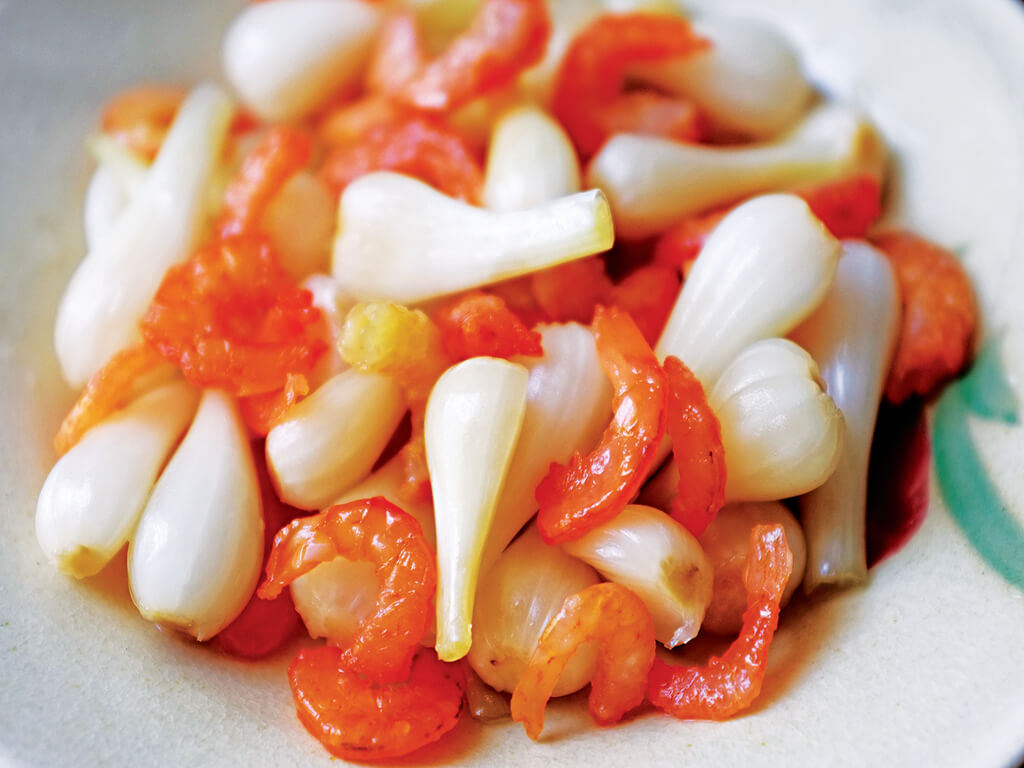
10 traditional Vietnamese Tết Dishes
The best restaurants in Chiang Mai
Chiang Mai is famous for the good Northern Thai cuisine that is different from what you see in Bangk ...
Top five foods to try in Turkey
Turkish food can be found in most major cities and has become an increasingly popular type of cuisin ...
Dining in paradise: The Maldives' finest tables
Set in the impossibly turquoise blue waters of the Indian Ocean, the islands of the Maldives have be ...
10 best desserts to try in Hong Kong
Desserts are serious business in Hong Kong – so much so that there are shops devoted entirely to des ...
7 foods to eat in Shilin Night Market, Taiwan
Taiwan is known for its street foods and snacks, definitely the one of the favourite stops of foodie ...
Where to drink in Da Lat
Da Lat does not offer the same buzzing drinking and nightlife opportunities as a metropolis like Sai ...







